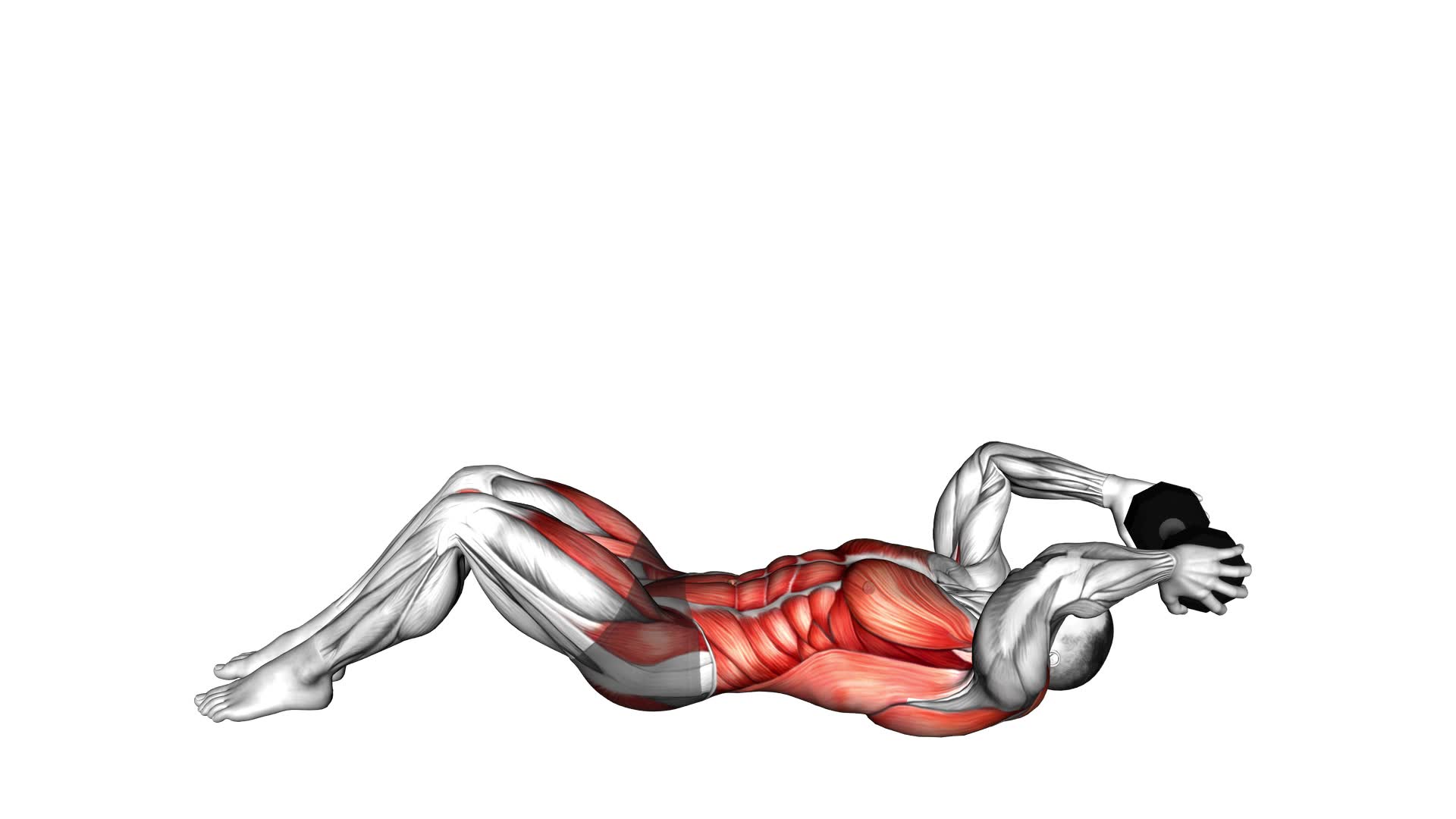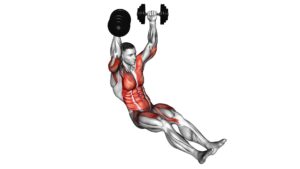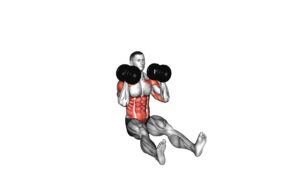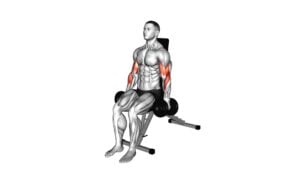Dumbbell Alternate V up – Video Exercise Guide & Tips

Are you looking for an effective core exercise that targets your abs and obliques?
Watch This Exercise Video
Look no further than the Dumbbell Alternate V up!
This video exercise guide will show you the proper form and technique to maximize your results.
With variations and tips to avoid common mistakes, you'll be on your way to a stronger and leaner midsection.
Grab a dumbbell and get ready to feel the burn!
Key Takeaways
- The Dumbbell Alternate V up targets abdominal muscles, obliques, and lower back.
- It improves overall stability and balance while promoting functional fitness and full-body coordination.
- Proper form and technique involve engaging core muscles, avoiding swinging or lifting legs too high, and keeping the lower back pressed into the mat.
- Variations and modifications include performing without dumbbells, using a stability ball for support or added challenge, and incorporating a Bosu ball for further balance and stability training.
Benefits of the Dumbbell Alternate V up
The Dumbbell Alternate V up offers a range of benefits for your core strength and stability. This exercise specifically targets your abdominal muscles, obliques, and lower back, helping to strengthen and tone these areas. By engaging your core muscles, you improve your overall stability and balance.
When performing the Dumbbell Alternate V up, you're required to maintain proper form and balance throughout the movement. This challenges your core muscles to work harder to stabilize your body, resulting in enhanced balance and coordination.
Additionally, this exercise activates multiple muscle groups simultaneously, leading to improved overall body strength. As you lift the dumbbell and raise your legs, you engage your arms, shoulders, and hip flexors as well. This compound movement not only strengthens your core but also promotes functional fitness and full-body coordination.
Incorporating the Dumbbell Alternate V up into your workout routine can contribute to a stronger and more stable core, improved balance, and enhanced coordination. Now, let's move on to the next section and discuss the proper form and technique for performing this exercise.
Proper Form and Technique for the Dumbbell Alternate V up
To perform the Dumbbell Alternate V up with proper form and technique, you need to focus on engaging your core muscles and maintaining balance throughout the movement. This exercise primarily targets your abdominal muscles, specifically the rectus abdominis, obliques, and hip flexors.
To begin, lie flat on your back on a mat with your legs straight and your arms extended overhead, holding a dumbbell in each hand. As you exhale, simultaneously lift your upper body and legs off the ground, bringing your arms and legs towards each other to form a V shape. Your lower back should remain pressed into the mat throughout the movement.
Inhale as you slowly lower your upper body and legs back to the starting position. It's important to avoid common mistakes such as using momentum to swing your body or lifting your legs too high, which can strain your lower back.
For variations and modifications, you can perform the exercise without dumbbells, or use a stability ball to support your lower back. Another option is to perform the exercise one side at a time, alternating between lifting your right arm and left leg, and vice versa.
Remember to maintain proper form and engage your core muscles throughout the exercise for optimal results.
Variations and Modifications for the Dumbbell Alternate V up
Try modifying the Dumbbell Alternate V up by using a stability ball for added support. This variation allows you to engage your core muscles while also improving your balance and stability.
Here are some different equipment options and advanced variations you can try to challenge yourself even further:
- Stability Ball Variation: Instead of performing the exercise on the floor, place a stability ball under your lower back. This will create an unstable surface, forcing your core muscles to work harder to maintain balance.
- Weighted Variation: Hold a dumbbell in each hand while performing the exercise. The added resistance will increase the intensity and challenge your muscles even more.
- Bosu Ball Variation: Perform the exercise on a Bosu ball instead of the floor. This will further challenge your balance and stability as you engage your core and other muscles to stay steady on the rounded surface.
Common Mistakes to Avoid During the Dumbbell Alternate V up
When performing the Dumbbell Alternate V up, make sure to avoid these common mistakes to ensure proper technique.
- One common mistake is using too heavy of a dumbbell. It's important to choose a weight that allows you to maintain control and perform the exercise with proper form. Using a weight that's too heavy can lead to swinging or jerking movements, which can strain the lower back and diminish the effectiveness of the exercise.
- Another mistake to avoid is rushing through the movement. The Dumbbell Alternate V up requires controlled and deliberate movements to effectively engage the core muscles. By rushing through the exercise, you may sacrifice proper form and not fully engage the targeted muscles.
- Additionally, be mindful of your breathing during the exercise. Holding your breath can increase intra-abdominal pressure and put unnecessary strain on your core muscles. Remember to exhale as you lift your legs and dumbbell off the ground, and inhale as you lower them back down.
Tips to Maximize Your Results With the Dumbbell Alternate V up
To optimize your results with the Dumbbell Alternate V up, focus on maintaining proper form and engaging your core muscles throughout the exercise. Here are some tips to help you maximize your results:
- Use a challenging weight: Choose a dumbbell that challenges your muscles without sacrificing form. This will help increase the intensity of the exercise and promote muscle growth.
- Control your movements: Avoid using momentum to swing your body up during the exercise. Instead, focus on controlled movements, lifting your legs and upper body at a slow and controlled pace. This will better engage your core muscles and ensure you're getting the most out of each repetition.
- Incorporate alternative exercises: If you find the Dumbbell Alternate V up too challenging or want to add variety to your routine, there are alternative exercises you can try. Plank variations, such as the side plank or plank with leg lift, can also target your core muscles effectively.
By following these tips, you can increase the intensity of your Dumbbell Alternate V up and maximize your results.
Remember to always listen to your body and adjust the weight and difficulty level as needed.
Frequently Asked Questions
How Many Sets and Reps Should I Do for the Dumbbell Alternate V Up?
To determine how many sets and reps you should do for the dumbbell alternate v up, it's important to consider the benefits of this exercise. The dumbbell alternate v up targets your abs, obliques, and hip flexors, helping to strengthen and tone these muscles.
As for variations, you can try performing the exercise without weights or using a medicine ball instead of dumbbells.
Remember to start with a weight and rep range that challenges you but still allows for proper form and control.
Can I Do the Dumbbell Alternate V up if I Have Lower Back Pain?
If you're dealing with lower back pain, it's important to be cautious when performing exercises that may exacerbate the issue.
While the dumbbell alternate V up can be a great exercise for strengthening your core, it may not be the best choice if you have lower back pain.
It's always a good idea to consult with a medical professional or a qualified trainer who can provide modifications or alternative exercises that can help you strengthen your lower back without aggravating the pain.
Is It Necessary to Use Dumbbells for the Dumbbell Alternate V Up?
No, it isn't necessary to use dumbbells for the dumbbell alternate v up. There are alternative exercises you can do without dumbbells that target the same muscles.
However, using dumbbells can provide added resistance and help increase the intensity of the exercise. This can lead to greater strength and muscle growth.
Can I Perform the Dumbbell Alternate V up Without a Mat?
Yes, you can perform the dumbbell alternate v up without a mat. However, using a mat has its benefits. It provides cushioning and support for your back, reducing the risk of discomfort or injury.
If you don't have a mat, you can modify the exercise by performing it on a carpet or a soft surface. Just make sure to maintain proper form and listen to your body to avoid any strain or discomfort.
How Long Should I Rest Between Sets of the Dumbbell Alternate V Up?
When performing the dumbbell alternate V up, it's important to give your body enough rest between sets. Rest periods can vary depending on your fitness level and goals.
Generally, it's recommended to rest for about 30-60 seconds between sets. This allows your muscles to recover and ensures you can perform the exercise with proper form.
However, listen to your body and adjust the rest periods as needed. Remember to stay hydrated and take breaks when necessary.
Conclusion
The Dumbbell Alternate V up is a highly effective exercise that targets the core muscles and improves overall strength and stability. By following proper form and technique, you can maximize the benefits of this exercise.
It's important to avoid common mistakes and make necessary modifications to suit your fitness level. By incorporating the Dumbbell Alternate V up into your workout routine and following these tips, you can achieve great results and enhance your overall fitness.

Author
Years ago, the spark of my life’s passion ignited in my mind the moment I stepped into the local gym for the first time. The inaugural bead of perspiration, the initial endeavor, the very first surge of endorphins, and a sense of pride that washed over me post-workout marked the beginning of my deep-seated interest in strength sports, fitness, and sports nutrition. This very curiosity blossomed rapidly into a profound fascination, propelling me to earn a Master’s degree in Physical Education from the Academy of Physical Education in Krakow, followed by a Sports Manager diploma from the Jagiellonian University. My journey of growth led me to gain more specialized qualifications, such as being a certified personal trainer with a focus on sports dietetics, a lifeguard, and an instructor for wellness and corrective gymnastics. Theoretical knowledge paired seamlessly with practical experience, reinforcing my belief that the transformation of individuals under my guidance was also a reflection of my personal growth. This belief holds true even today. Each day, I strive to push the boundaries and explore new realms. These realms gently elevate me to greater heights. The unique combination of passion for my field and the continuous quest for growth fuels my drive to break new ground.







